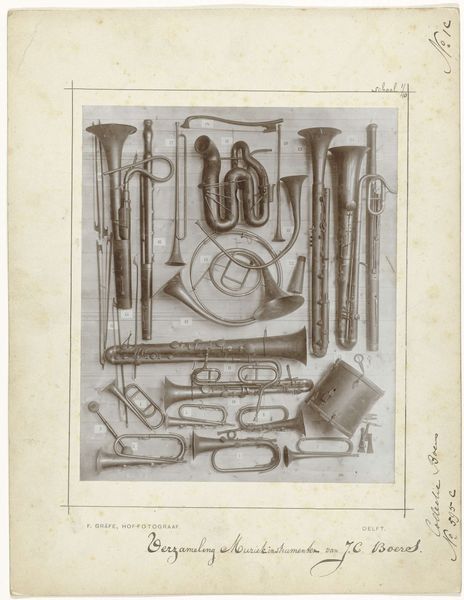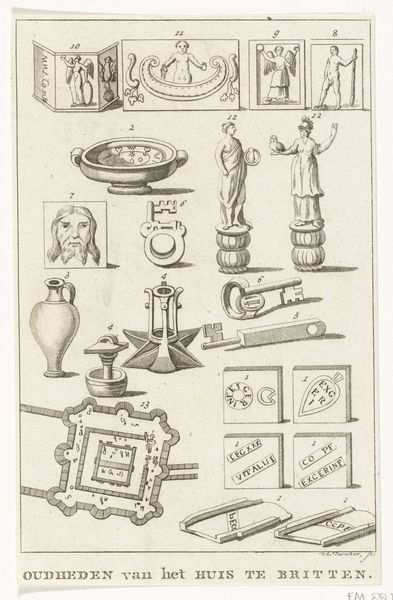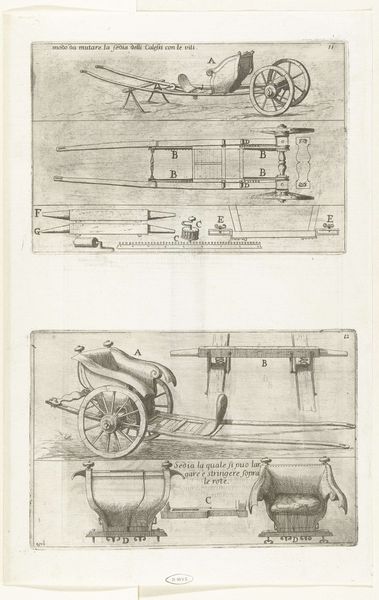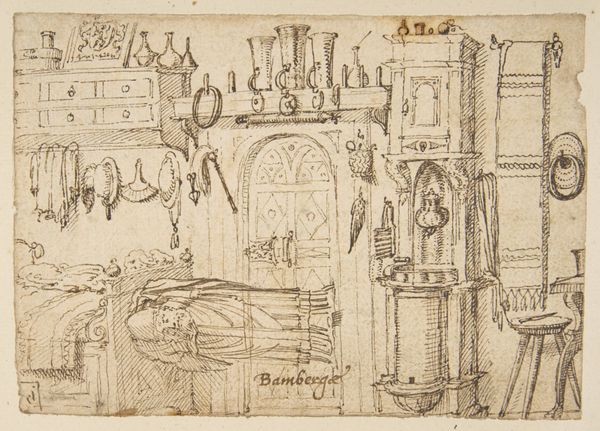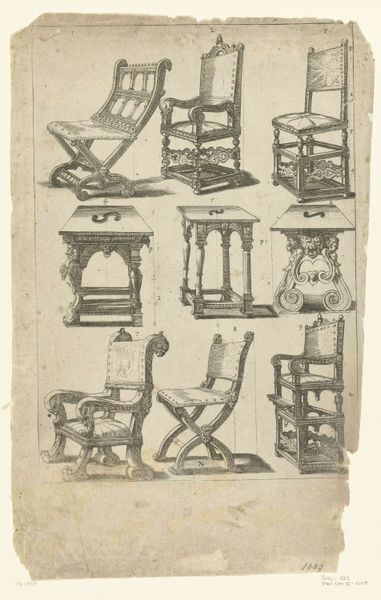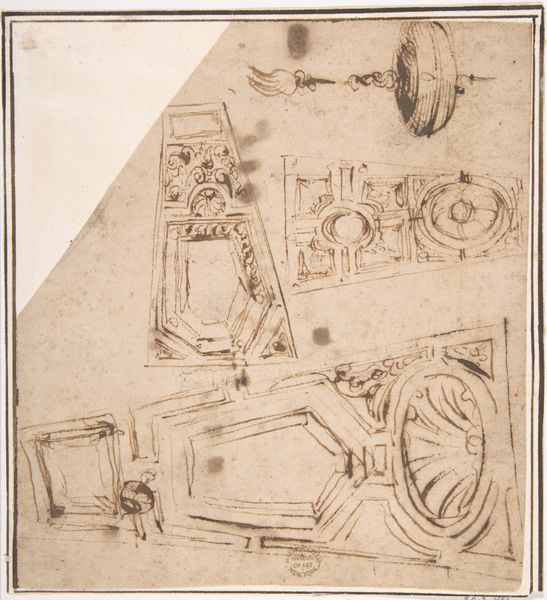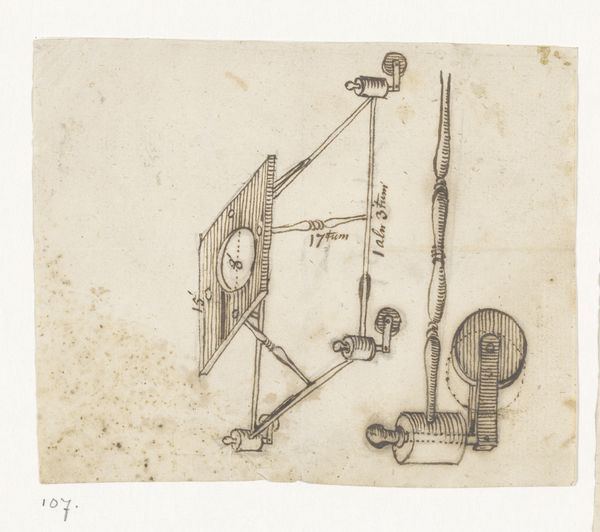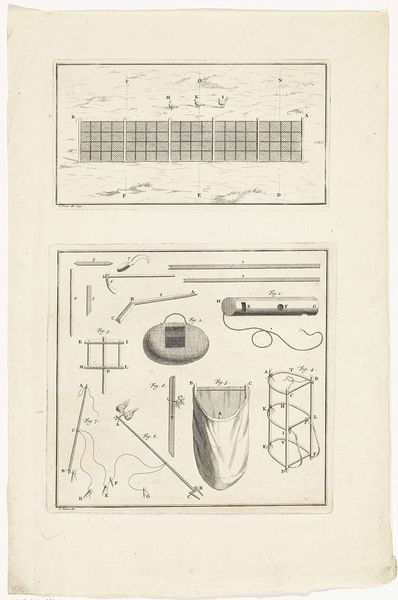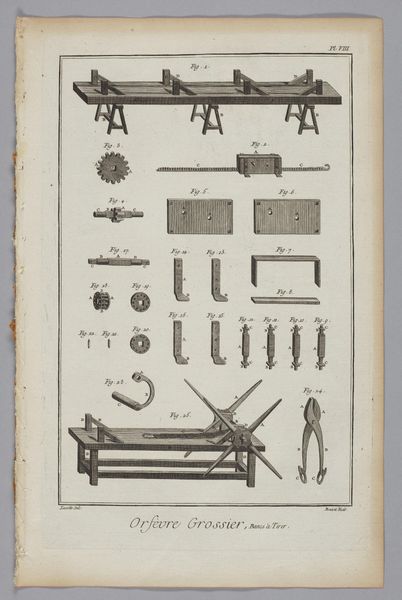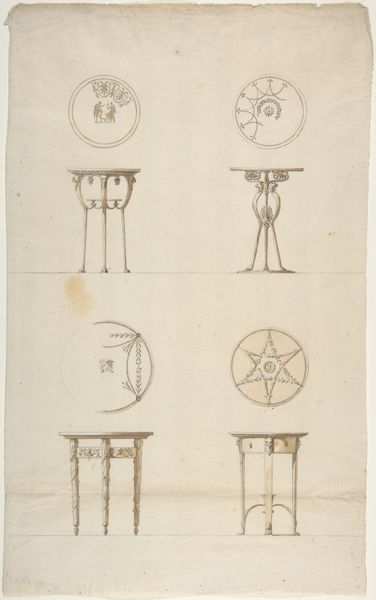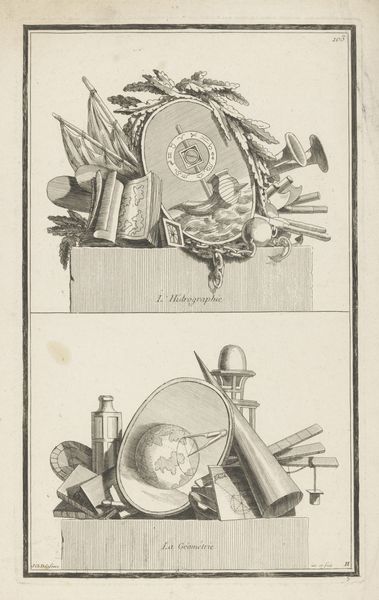
drawing, print, engraving
#
drawing
# print
#
old engraving style
#
geometric
#
genre-painting
#
history-painting
#
academic-art
#
engraving
Dimensions: height 149 mm, width 107 mm
Copyright: Rijks Museum: Open Domain
Curator: Looking at this detailed engraving, I'm immediately drawn to its almost encyclopedic quality, presenting us with what appears to be a breakdown of spinning and reeling mechanisms. Editor: My first impression is the stillness. Despite the domestic scene above with women working, and the many pieces below labeled with numbers, it gives me a feeling of ordered silence. Like a diagram frozen in time. Curator: That's a great observation. Created sometime between 1733 and 1756 by A.J. Defehrt, it meticulously details each component – various spindles, wheels, and reeling devices—with a degree of precision meant for instruction, reflecting the emphasis on artisanal production of the time. The artist uses both drawing and printmaking, mediums reflecting the desire to distribute this visual data more widely. Editor: It’s interesting to note the tools of production depicted, almost elevated to subjects worthy of meticulous attention. In contrast, the female figures are placed more informally, as if incidentally caught up in the scene of this "genre painting". Could we say this print symbolizes the shift in attitudes towards work, specifically female labor, rendered alongside geometric schemas? Curator: Indeed. The material reality and functionality are paramount, even taking precedence over human figures in a curious way. These geometric structures weren't merely tools; they embodied a nascent technological language which reflected and propelled societal evolution in the era. Note, how each object bears the weight of functionality. This visual language would, undoubtedly, serve as blueprints for further material innovation. Editor: Yes, and within this visual schema, certain implements take on greater symbolism – the wheel, particularly. Across many cultures, spinning and weaving connect deeply to creation myths, fate, the turning of time. Here, diagrammed for practical purposes, Defehrt unknowingly participates in and transforms centuries of accumulated iconography. Curator: I agree, there is definitely a transformation. By demystifying this labor via diagrams, Dehehrt allows us to see how human intention manifests in a material reality. What seemed a 'frozen' image actually pulses with latent possibilities. Editor: It is the image of latent possibilities! A fascinating piece that layers objective instruction with centuries-old visual and symbolic resonance. Curator: Precisely, revealing how even technical drawings embed within their lines a deeper cultural narrative.
Comments
No comments
Be the first to comment and join the conversation on the ultimate creative platform.
